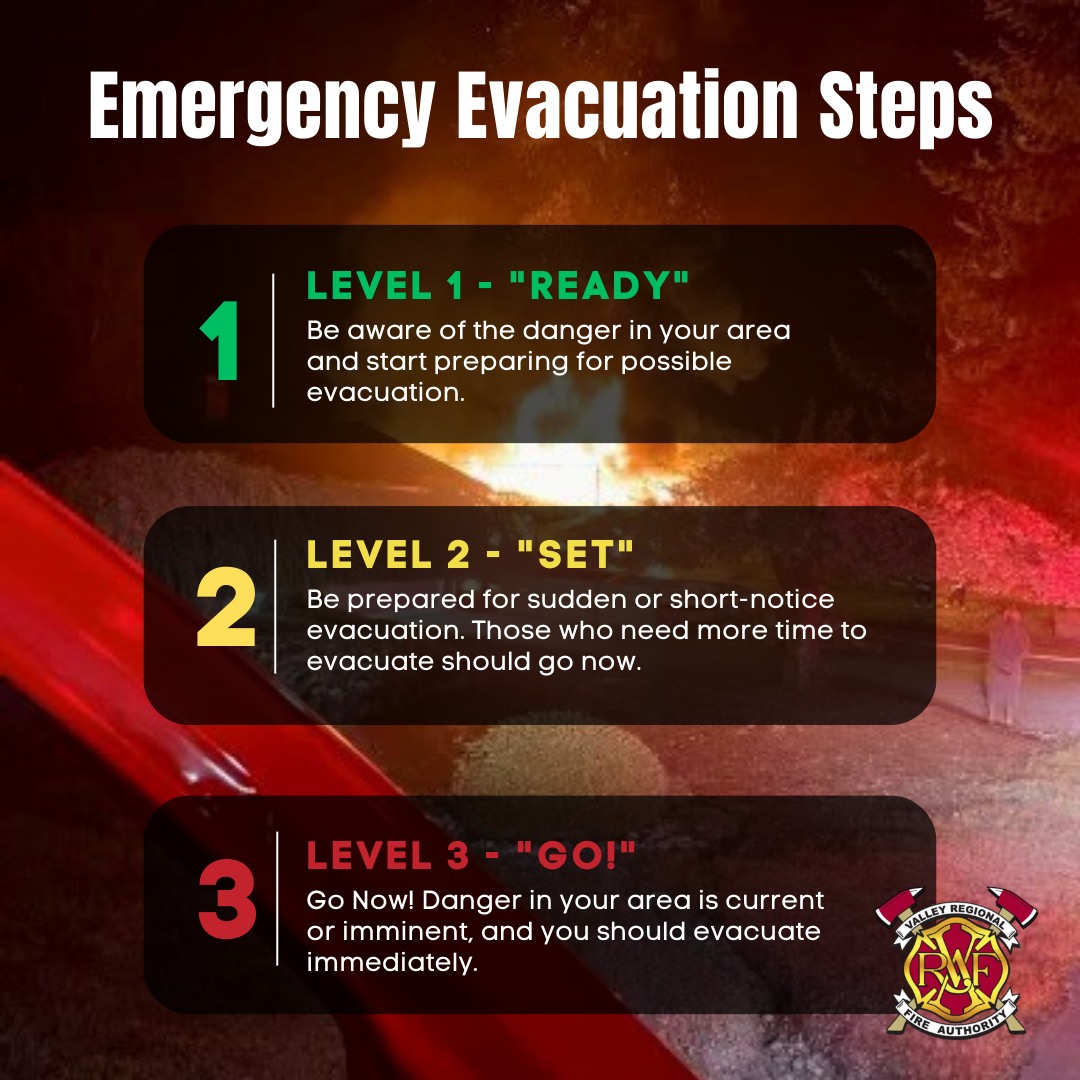Ready, Set, Go! Emergency Evacuation Campaign Launched
We are joining forces with fire and life safety agencies across King, Pierce, Snohomish, and Thurston counties to launch the “Ready, Set, Go!” Evacuation Campaign. The purpose of this campaign is to standardize and simplify evacuation messages for the public.
With smoke recently inundating our region and evacuations in the Spokane area, wildfires are on our minds. These evacuation steps are intended for all hazards, with an initial emphasis on wildfires. We encourage you to take a moment to become familiar with the following steps:
- 1. “Ready” Phase (Level 1): Be aware of the danger in your area and start preparing for possible evacuation. Monitor local media and check on neighbors. If you do not already have an evacuation plan or a Go! kit, assemble these now. Conditions can change suddenly, and you may not receive a Level 2 “Be Set” warning before you are ordered to Level 3 “Go!” Prepare both the inside and outside of your home for fire. Leave if you feel unsafe — do not wait for an official evacuation order.
- 2. “Set” Phase (Level 2): Be prepared for sudden or short-notice evacuation. People who need help or more time to evacuate — such as people with disabilities, people with small children, people with medical conditions, and people with large animals — should evacuate now. Ensure your evacuation plan checklist is complete and that your Go! kit is in your vehicle. Stay informed and be aware of alerts from local law enforcement and fire departments. Always remember to leave if you feel unsafe, do not wait for an official evacuation order.
- 3. “Go!” Phase (Level 3): Go now! Danger in your area is current or imminent, and you should evacuate immediately. Follow directions from law enforcement or fire departments and do not return home until officials have determined it is safe. Notification that it is safe to return home will be given as soon as possible.
